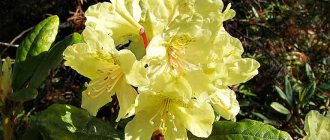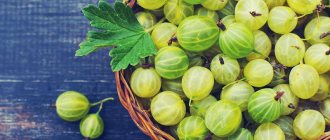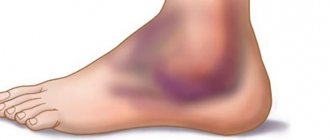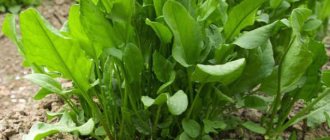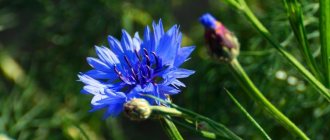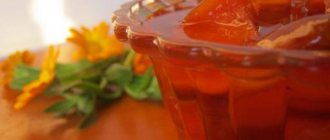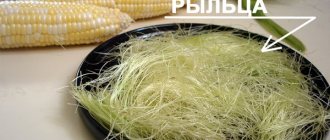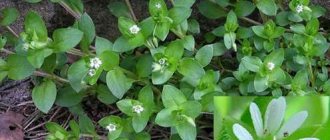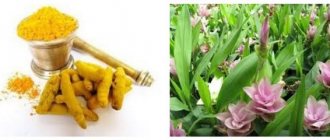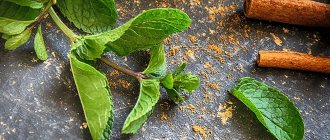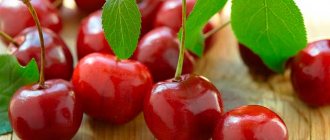Chemical composition of lingonberry leaves
Lingonberry greens contain no less useful substances than the berries of the plant. In particular, the composition contains:
- antioxidants and phytoncides;
- ascorbic acid;
- subgroup B vitamins and rutin;
- arbutin, magnesium, zinc;
- iron and manganese;
- organic acids;
- tanning components.
Lingonberry medicines bring relief from many diseases. To prepare infusions and decoctions, both fresh and dried raw materials are used.
Harm of lingonberries
Despite the enormous invaluable help from the fruits of the plant in question, we must not forget how insidious the lingonberry is. Benefit and harm are its two different sides, inseparable from each other. Firstly, it should immediately be noted that it should not be used by those who suffer from increased secretory function of the stomach and peptic ulcer disease. It will also be harmful to people with low blood pressure. It is not recommended to consume lingonberry juice and its fruits immediately after eating. This plant has the ability to accumulate and absorb radioactive substances, so berries collected near burial grounds, factories and similar places will bring you absolutely no benefit. You don't need such lingonberries - the harm may be greater than the benefit. In general, before using it, it is better to consult with the right medical specialist, remembering the risks of self-medication.
What helps and what are the benefits of lingonberry leaves for the human body?
The rich chemical composition of lingonberry leaves gives them numerous beneficial properties. Infusions and decoctions based on them:
- alleviate the condition of inflammatory processes in the kidneys and genitourinary tract;
- have a pronounced bactericidal effect;
- help cleanse the body of toxins and waste;
- accelerate digestive processes;
- increase the body's immune defense;
- help get rid of edema due to its mild diuretic effect;
- have a beneficial effect on the nervous system;
- reduces temperature during colds.
The benefits of lingonberry leaves for the human body are manifested in arthritis, rheumatism and osteochondrosis.
Lingonberry greens reduce blood sugar in diabetes
What do lingonberry leaves help women with?
The beneficial properties of lingonberry greens for women are that drinks based on raw materials restore hormonal balance, even out mood and stop bleeding. They can be used for cystitis, mastopathy and infectious diseases to relieve inflammation. During critical days, lingonberries help reduce blood loss and reduce pain.
During pregnancy, natural drinks can be consumed in the later stages for swelling and to prevent colds. But in the first weeks of gestation, the benefits and harms of a decoction of lingonberry leaves are ambiguous. The drug can cause a miscarriage, and it is better not to take it.
Is it possible to eat lingonberry leaves while breastfeeding?
Lingonberries during lactation promote faster recovery after childbirth, improve the condition of the nervous system and replenish the lack of vitamins. Products based on it stimulate lactation; this is useful if a woman has difficulty producing milk.
At the same time, the instructions for using lingonberry leaves advise taking them in small dosages and no more than a couple of weeks in a row. It is better to introduce drinks into the diet 2-3 months after childbirth. During use, the child’s condition should be monitored; he may develop an allergy.
What do lingonberry leaves help men with?
The healing properties of an infusion of lingonberry leaves are especially in demand for men over 45 years of age. At this age, many people experience problems with the genitourinary area, prostatitis develops, and chronic negative processes appear. Lingonberry drinks are beneficial for urethritis, improve blood circulation in the pelvis and prevent the development of tumors.
Is it possible to give lingonberry leaves to children?
Medicinal raw materials can benefit the child's body. Tea based on lingonberry leaves helps cope with colds and strengthens the immune system, stimulates active brain activity. You can brew a drink for your child together with berries, so the product will become tastier and even healthier.
We recommend reading: Mint tea: beneficial properties and contraindications, how to make
Lingonberry greens strengthen a child's attention and concentration
But at the same time, you can offer a natural remedy to a child only after six years. The initial dosage of lingonberry leaves for children should not exceed 20 ml.
Recommended reading: Benefits of milk tea
Attention! Before offering a natural remedy to a child for the first time, you should consult a pediatrician. Herbal raw materials have some contraindications.
Is it possible to take lingonberry leaf for gout?
The medicinal properties of lingonberry leaves help dissolve uric acid salts in the joints. Taking natural drinks for gout is allowed and quite useful. In the acute stage of the disease, a strong lingonberry decoction is used for therapeutic purposes, and in the case of a calm course of the disease, an infusion with a weak concentration is used.
Advice! When treating gout, it is especially recommended to combine a medicinal drink with the consumption of vegetables, grains and herbs.
Use of lingonberry leaves for health
For medicinal purposes, lingonberry leaves are used quite extensively. For colds and flu, it can be a good antipyretic and strengthen the immune system during the difficult spring period.
For gastritis, lingonberries can be used as a laxative. If you have a sore throat, sore throat, or cough, you can gargle with berry infusions.
Also, the leaves can reduce sugar levels in the body, and therefore are useful for diabetes and various pathologies of the bladder. You can benefit from eating these berries if you have prostate adenoma or difficulties with urination.
The plant can be used for edema of renal and cardiac origin. This fruit copes well with pain in the head, especially in the occipital part.
Lingonberry juice is good for hypertension, bedwetting, and in cosmetic procedures.
The beneficial properties of lingonberry leaves are as follows:
- removal of toxic substances;
- antipyretic effect;
- decreased blood sugar levels;
- strengthening the immune system;
- restoration of vitamin balance;
- choleretic effect;
- diuretic effect - this is where lingonberry has beneficial properties for women suffering from kidney disease, for men it is useful in the same way;
- regulation of protein metabolism in the body;
- decreased blood pressure;
- positive effect on the nervous system;
- improving the condition of the skin;
- antibacterial and anti-inflammatory properties.
You also need to pay attention to the contraindications of lingonberry leaves. People suffering from gastritis and high acidity should take them with extreme caution.
Health properties of lingonberry leaves:
Due to their properties, the berries and leaves of the plant have a choleretic and antiseptic effect, lower sugar levels, remove toxins, replenish vitamin deficiency, and strengthen the immune system.
Requirements for raw materials
The beneficial properties of lingonberry leaves are determined by its composition. They are recognized as the main medicinal raw materials of this plant. Harvesting is carried out at certain times - immediately after the snow melts or after the completion of the fruiting cycle of the bush. The frequency of procurement is determined by the composition of medicinal raw materials, which varies depending on the growing season.
You can find out about the calorie content and properties of unabi here.
Lingonberry leaves collected in summer turn brown. This color indicates that the raw material is of poor quality and the use of lingonberry leaves will not be effective. High-quality raw materials collected on time have the following characteristics.
- Size. The length of the leaves should be thirty millimeters and the width more than fifteen millimeters. A leaf that is more than one year old grows to this size. Young shoots are not used for harvesting, since their composition does not meet the requirements of GOST. If smaller leaves are found in the package, the raw materials are of poor quality.
- Color. On the outside of the leaves it is dark green, rich, and the surface itself is smooth and glossy. The inner surface is lighter, but also green and matte. During drying, high-quality raw materials do not change color, and if they turn brown, such leaves are rejected from the batch.
The raw materials are odorless. They come on sale in the form of pressed braces, from which you need to break off a part and weld it. A decoction of lingonberry leaves has a bitter, astringent taste.
Methods of preparation and use
Traditional medicine offers many options for brewing lingonberries. In general, the recipes are similar to each other, but differ in the proportions of ingredients and rules of use.
Is it possible to brew lingonberry leaves?
Before consumption, lingonberry leaves are most often thermally treated. Based on them, you can prepare both an infusion and a decoction with a high concentration of useful substances. Brewing does not violate the valuable properties of the raw material if the correct algorithms are followed.
Tincture
Lingonberry leaves are successfully combined with an alcohol base. Valuable substances dissolve well in alcohol; even with minimal dosages, the tincture brings a quick positive effect.
You can prepare the medicine as follows:
- pour a large spoonful of crushed raw materials into a glass vessel;
- add 250 ml of alcohol or vodka;
- close the container and put it in a dark place for two weeks.
The finished tincture is filtered and taken 30 drops three times a day. If desired, you can add chopped dry shoots to the greens during cooking; the benefits will be even greater.
To prepare lingonberry tincture, use only dry leaves.
Infusion
The simplest recipe suggests making a vitamin infusion. Here's how to properly brew lingonberry leaves:
- pour a large spoonful of raw materials into a thermos;
- add 500 ml of boiling water;
- stand for four hours, and then pass through folded gauze.
You need to drink the infusion 50 ml twice or thrice a day.
Lingonberry infusion is best consumed after meals
Decoction
During the boiling process, lingonberry leaves release the maximum amount of valuable substances. The recipe for preparing the medicine looks like this:
- two large spoons of dried raw materials are poured into 1 liter of water;
- simmer over low heat for 20 minutes;
- cool until warm and filter.
You need to use the product 100 ml three times a day. If you are going to use the decoction externally, you can slightly change the recipe and take only 500 ml of water for the same amount of dry raw material.
Lingonberry decoction is used not only internally, but also for rubbing and rinsing.
Tea
Fragrant lingonberry tea has a low concentration of beneficial substances; it is taken mainly for the prevention of diseases. But at the same time, you can drink the product every day and not fear an overdose.
The recipe for making tea looks like this:
- a handful of leaves is poured into a teapot;
- pour 500 ml of hot water;
- leave for five minutes and distribute into cups.
It is best to prepare the drink in small portions at a time. The beneficial substances in tea and its pleasant aroma do not last long.
Dry and fresh lingonberry leaves are used to make tea.
Lingonberries to increase potency: effective recipes
You can make delicious jams and compotes from lingonberries, but in order to preserve their medicinal properties, it is recommended to minimize heat treatment.
Morse
This sour, refreshing fruit drink perfectly quenches thirst, saturates the body with vitamins and is easy to prepare:
- Bring 2.5 liters of water to a boil.
- Add 0.5 kg of lingonberries. To speed up the infusion, it is recommended to crush the berries thoroughly.
- Leave for 4–8 hours, or overnight (using frozen fruits takes longer). The liquid should become red and saturated.
- Strain, add honey or sugar to taste.
After pouring the ingredients into boiling water, there is no need to cook the fruit drink. If desired, lemon, mint, and other berries are added to the lingonberries.
Leaf tea
The bitter drink has diuretic, anti-inflammatory, antipyretic, analgesic and antibacterial properties. According to the classic recipe, pour 250 ml of boiling water over a tablespoon of dry leaves and leave for 15–20 minutes. The resulting tea should be divided into 3 servings and drunk throughout the day before meals. The recommended course is 5–7 days.
For a milder effect, a small amount of plant material can be added to green tea. Honey, ginger, and lemon will help improve the taste.
Sauce
Sweet and sour seasoning goes well with meat, fish, and desserts. To prepare you will need:
- 0.5 kg lingonberries;
- 0.25 kg sugar.
Pour fresh or thawed lingonberries with a small amount of water (about 200 ml), bring to a boil, cook for 2-3 minutes. Grind until smooth using a blender, strain if desired. Add sugar, bring to a boil again, and leave to steep for 10–12 hours. Serve cold.
You can diversify the taste of the sauce by adding citruses or spices to it, as well as replacing water with wine.
The use of lingonberry leaves in folk medicine
Homemade health recipes suggest using lingonberries to treat inflammatory and infectious diseases. Drinks based on raw materials have powerful antiseptic and strengthening properties.
Lingonberry leaf for pyelonephritis
In the treatment of kidneys, lingonberry leaves help well with a water infusion, which is prepared as follows:
- a small spoon of dry herbs is poured into a thermos with 500 ml of recently boiled water;
- kept closed for six hours;
- The finished drink is filtered through cheesecloth.
You need to take 100 ml of infusion every four hours. In case of acute kidney inflammation, a natural remedy should be combined with pharmaceutical medications.
Attention! For pyelonephritis, it is strictly forbidden to use alcoholic lingonberry tinctures for treatment.
Lingonberry leaves for prostatitis
Many men over 45 years old suffer from prostatitis. To relieve inflammation and relieve pain, you can prepare the following decoction:
- dry lingonberry greens are mixed with rowan and rosehip berries in equal quantities;
- measure out two large spoons of the mixture and pour in 600 ml of water;
- boil over medium heat for 15 minutes;
- cool and filter.
We recommend reading: Rosehip infusion: benefits and harms, how to prepare
Take the drug twice a day, 100 ml, and the total course of therapy is continued for up to two months, depending on how you feel.
It is best to drink lingonberry infusion for prostatitis in the morning and evening shortly before bedtime
Lingonberry leaves for gastritis
Among the indications for the use of lingonberry leaves is gastritis with reduced acidity. Healing drinks based on plant materials help speed up digestion and eliminate heaviness in the stomach. The following medicinal collection brings benefits:
- coltsfoot, chamomile and lingonberry leaves are mixed in equal volumes of 5 g;
- add 2 g of calendula;
- pour 1 liter of liquid and cook in a water bath for half an hour.
The finished product is cooled, filtered and divided into equal portions, after which it is taken three times a day on a full stomach.
Lingonberry leaf for osteochondrosis
For joint ailments, the following infusion is beneficial:
- 100 g of lingonberry greens are poured into 2.5 liters of hot water;
- keep the product covered for two hours;
- after the time has passed, add 250 ml of vodka;
- Boil for another 15 minutes in a water bath.
The tincture is taken 100 ml three times a day on an empty stomach. If you use the product for six months with short breaks, you can achieve noticeable improvements.
Lingonberry leaf for kidney inflammation
You can brew a lingonberry leaf to cleanse the kidneys and relieve inflammation in the following way:
- pour a small spoon of dried herbs into 100 ml of boiling water;
- insist for an hour;
- filter through cheesecloth.
The drink is divided into four equal portions and consumed on an empty stomach throughout the day. The infusion has a diuretic and antibacterial effect.
Lingonberry leaf for oncology
Lingonberry leaves suppress the spread of malignant cells and stimulate the body to fight the disease. The following remedy is beneficial:
- a small spoon of dried herbs is poured with 400 ml of boiling water;
- keep steamed for 30 minutes;
- filter and cool.
You need to take 100 ml each time after eating.
Lingonberry leaf reduces the negative effects of chemotherapy
Attention! Lingonberry leaf can only be used for cancer in combination with official treatment and with the permission of the oncologist.
Lingonberry leaves for colds
The anti-inflammatory properties of lingonberry leaves help relieve fever and speed up recovery from influenza and ARVI. The following remedy gives a good effect:
- 5 g of dry raw material is poured into 300 ml of hot water;
- insist for ten minutes;
- strain through folded cheesecloth.
You need to take the medicine several sips throughout the day. To increase the benefits, you can add raspberries grated with sugar or a little honey to the drink.
Advice! If you have a cold, you can gargle with a decoction of lingonberry leaves or breathe in the steam from a hot infusion.
How to prepare decoctions and tinctures
Making a medicinal drink from lingonberries is not at all difficult. In folk medicine there are many recipes for teas, tinctures and syrups based on this berry.
- In order to prepare lingonberry tea, just pour boiling water over half a glass of berries and/or leaves of this plant and let it brew for 10-15 minutes. If desired, you can add other beneficial herbs to this drink. For example, I like to add fireweed.
- If you prefer the rich taste of lingonberries, use a juicer, dilute the resulting juice with water and add a little honey.
- To prepare the tincture you will need about 500 ml of vodka per glass of berries. The fruits need to be poured with alcohol, tightly closed with a lid and left to infuse for 20-30 days. You should drink one tablespoon of the tincture once a day after meals: it is perfect for strengthening the immune system during the cold season.
I recommend watching the following video about the benefits of the plant.
How to brew and drink lingonberry leaves correctly
In order for plant materials to be beneficial, they must be consumed in accordance with certain rules. It is necessary to take into account the specifics of diseases and the norms for the use of drinks.
How much to drink and is it possible to take lingonberry leaves for more than a month?
The dosage and duration of taking lingonberry decoctions and infusions depend on the specific recipe. But usually natural remedies are consumed in a volume of no more than 1/3 glass twice or thrice a day. It is better to take drinks on a full stomach, so that the organic acids in the composition do not lead to irritation of the mucous membranes.
In total, it is recommended to drink lingonberry infusions and decoctions for no longer than 14 days in a row. If necessary, taking teas with weak concentrations can be extended to a month, but after this they must take a break for 1-2 weeks.
How to brew lingonberry leaves for kidney disease
Brew lingonberry leaves for kidney disease according to this recipe:
- pour 200 ml of water into 10 g of dry raw materials;
- boil for ten minutes;
- cool and pass through cheesecloth.
Drink a large spoonful of this healthy infusion four times a day.
How to brew and take lingonberry leaf for swelling
To remove excess fluid, you can use the following recipe:
- pour 20 g of lingonberry greens into a glass of boiling water;
- keep covered for an hour;
- strain and wait to cool.
Drink 20 ml of the product three times a day, preferably on a full stomach.
Lingonberry drink against edema reduces the load not only on the kidneys, but also on the heart
How to take lingonberry leaves as a diuretic
To brew lingonberry leaves for a diuretic effect, follow this recipe:
- 30 g of dry herbs are poured into 500 ml of boiling water;
- keep for a quarter of an hour in a water bath;
- leave for another 45 minutes covered;
- add clean water to the initial volumes and filter.
Take 50 ml of the drink on an empty stomach three times a day, in total treatment is continued for no more than 14 days in a row. It is not recommended to drink diuretic lingonberry decoction at night - it can interfere with restful sleep.
How to brew and drink lingonberry leaf for cystitis
For inflammation of the urinary tract, the following remedy is beneficial:
- 30 g of dried lingonberry raw materials are poured into 1 liter of boiling water;
- cover the container with a lid and leave to infuse for an hour;
- filter.
You need to drink the medicine 150 ml three times a day, preferably warm.
How to take lingonberry leaf for high blood pressure
For hypertension, a simple lingonberry decoction has a good effect. They do it like this:
- 100 g of dry greens along with twigs and flowers are poured with 500 ml of water;
- boil over low heat for about 20 minutes;
- remove from the stove and leave covered for another six hours.
The strained product should be consumed 1/2 cup three times a day.
How to take lingonberry leaves for weight loss
Lingonberries effectively remove excess fluid and toxins, thereby promoting weight loss. On a diet, it is useful to use the following infusion:
- two large spoons of crushed dry raw materials are poured into 400 ml of boiling water;
- keep in a water bath for 15 minutes;
- remove from heat and leave for another 45 minutes.
The strained product is added to the original volume and consumed 50 ml on an empty stomach three times a day.
To lose weight, drink lingonberries for no longer than 21 days.
Contraindications and possible harm
The nutrients contained in lingonberries cause the following contraindications:
- gastrointestinal ulcers, increased stomach acidity;
- stones in the kidneys;
- allergy.
If you have diseases of the urinary system, it is recommended to consult a urologist before starting to use the product; caution should also be exercised if you are prone to low blood pressure.
It is important to choose high-quality fruits and follow the norm for their consumption, since harm can be caused both by toxins absorbed by the plant from the environment and by an excess of seemingly beneficial substances. The recommended amount is 1 glass of berries per day.
Contraindications and side effects due to lingonberry leaves
The health benefits and harms of lingonberry leaves depend, among other things, on contraindications. The latter include:
- chronic hypotension;
- gastritis with increased production of gastric juice;
- pancreatitis and stomach ulcers;
- individual allergies;
- acute renal failure.
You need to use lingonberry medicinal products strictly according to recipes. In case of overdose, the development of side effects is possible - nausea, dizziness, shortness of breath and diarrhea. If your health sharply worsens due to the use of raw materials, you should immediately stop using lingonberries and consult a doctor.
Benefits of lingonberries
By eating berries in everyday life, you can prevent a number of ailments. Fruits strengthen capillaries, normalize metabolism, and improve all processes occurring in the body.
For urinary tract damage
- It is worth paying tribute to lingonberries for their healing effects on the genitourinary system. Juice from the berries resists the formation of recurrent infections. The therapeutic effect is achieved through the presence of proanthocyanidins in the product.
- In another word, the substances can be called flavonoids; the latter inhibit the adhesion of the bacillus in the intestine. The parasite is the main causative agent of urinary tract infections.
- To treat the disease, specialists can prescribe a course. It is necessary to systematically consume an infusion of lingonberry leaves. The composition has a diuretic property and helps in the fight against pyelonephritis, cystitis, edema and urolithiasis.
For oncological abnormalities
- The fruits of the bush resist several cancers. Thanks to the inhibitory activity, the berries fight against malignant cells of the cervix, colon and leukemia.
- In the modern world, a considerable number of berries have been identified that can resist cancer. Among them, lingonberry is the leader due to its high content of procyanidins.
In inflammatory processes
- Traditional healers in ancient times actively used lingonberries in the fight against inflammation and pain that arose as a result of the development of rheumatoid arthritis.
- Modern science has shown that berries have anti-inflammatory substances that resist the formation of osteochondrosis, arthritis and gout.
- Scientists from Finland have proven that lingonberry fruits are effective as a pain reliever. Such properties are achieved due to the high concentration of quercetin in the product.
benefits and harms of peas
For hyperpigmentation
- Lingonberries have proven themselves well as a product that can preserve youth. The leaves of the bush resist the formation of age spots.
- The effect is achieved due to the presence of arbutin in the composition. The enzyme prevents hyperpigmentation. In addition, it inactivates tyrosine, which is responsible for skin pigmentation.
- To achieve maximum benefit from such a decoction, lingonberry leaves need to be brewed along with other raw materials (gooseberries, raspberries, currants).
For the oral cavity
- It is important to maintain oral hygiene. Otherwise, you risk developing periodontal disease. The disease can develop into a chronic form.
- The disease is an infection of inflamed gums. If measures are not taken in time, periodontal disease can cause the development of a number of serious ailments.
- Thus, health problems arise, diabetes develops, and pathogenic bacteria multiply.
- For pregnant women, periodontal disease is especially dangerous; in an advanced state, the disease can cause premature birth and also harm the fetus.
- To prevent the development of periodontal disease, you need to maintain proper oral hygiene. It is enough to brush your teeth in a timely manner and rinse with lingonberry infusion. Tannin is the strongest antimicrobial substance.
Collection and preparation of lingonberry leaves
The medicinal properties and contraindications of lingonberry grass and leaves depend on the knowledge of collection. Harvesting is carried out at a certain time according to all the rules.
When lingonberry leaves are collected and prepared for medicinal purposes
It is best to collect the leaves of the plant in early spring before flowering begins. At this moment, the internal resources of the lingonberry have not yet been redirected to buds or ripening berries. Therefore, greens contain the maximum amount of valuable substances.
When collecting, it is recommended to cut small branches from the bush, and not just pick off the leaves. When dried together with the shoots, the green plates retain more vitamins.
How to dry lingonberry leaves at home
Traditionally, lingonberry leaves are dried in the fresh air or indoors with good ventilation, spread in a thin layer on a flat surface. But you can use an oven or electric dryer to speed up the process. The main requirement is that the temperature should not exceed 50 °C, otherwise the valuable substances in the raw material will simply be destroyed.
Dried lingonberry leaves remain beneficial throughout the year
Raw materials should be stored in glass or wooden containers under a lid, away from light and at low humidity. You can also put the leaves in a paper bag.
The benefits and harms of lingonberry leaves
If we consider the lingonberry bush, then not only its fruits will benefit. The leaves can also be used for medicinal purposes. They contain: organic acids, vitamins, tannin, flavonoids, hydroquinone, arbutin, tannins. It turns out that the leaves of this plant are absolutely in no way inferior to its fruits. So they, or rather, decoctions of them, are recommended for the same problems and diseases as the berries themselves. These decoctions are very useful for diabetes, liver and kidney diseases, rheumatism, etc. Considering that the lingonberry leaf, its benefits and harms, are similar to the fruits of the bush, we will limit ourselves to its most basic use in complex treatment. The leaves will help well with ailments such as prostatitis, pyelonephritis, edema, pneumonia, bronchitis, and diseases of the oral cavity. They are used to treat cancer due to their antitumor properties. As for the harm of lingonberry decoction, it, among other things, should not be consumed by children under 12 years of age and by hypertensive patients (more than two weeks).
